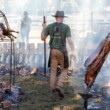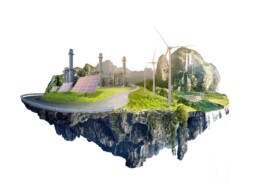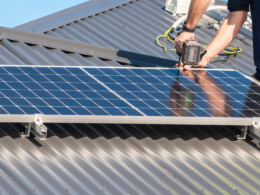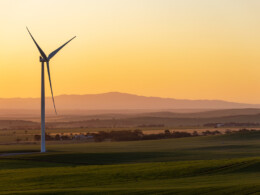As New South Wales accelerates its transition to renewable energy, long-duration energy storage has emerged as a critical component to ensure a stable power grid.
In May 2024, the NSW government launched its biggest-ever energy storage tender, aiming to solidify a foundation for renewable power. With a recent commitment to nearly double long-duration storage capacity, targeting 28 gigawatt-hours by 2034, NSW is setting ambitious goals to support its renewable energy targets. This push includes a focus on both pumped hydro storage projects and grid-scale batteries. Each has its own strengths and challenges, making it essential to evaluate how they can work in tandem to create a reliable, renewable energy landscape.
Long-duration energy storage is defined by the NSW government as the ability to dispatch electricity over an eight-hour period. This storage duration is particularly beneficial for balancing the variability of renewable sources like wind and solar. Energy Minister Penny Sharpe emphasised that long-duration storage will play a pivotal role in helping NSW meet its energy needs, especially as coal-fired plants retire. Achieving reliable long-duration storage means the state can store excess energy generated during high-output periods and release it during peak demand, enhancing grid stability.
The Lake Lyell Pumped Hydro Project, located near Lithgow, NSW, is an important component of the state’s renewable transition strategy. If this project goes ahead, it aims to deliver up to eight hours of storage capacity. This project involves repurposing existing water infrastructure to create a pumped hydro storage system capable of providing a substantial energy buffer to the grid.
Lake Lyell’s planned capacity aligns well with the government’s long-duration storage goals. By using water from an upper and lower reservoir, the system can store energy in the form of potential energy when excess renewable power is available. When demand peaks, this energy is released by allowing water to flow down, generating electricity through turbines. Projects like Lake Lyell offer a natural, time-tested solution for energy storage, with lifespans that can extend well beyond 50 years, providing NSW with a long-term infrastructure solution.
Despite the project’s classification as Critical State Significant Infrastructure (CSSI) by the NSW Government, the Lake Lyell Pumped Hydro Project has encountered local opposition. At its October meeting, Lithgow City Council voted against supporting the project, reflecting concerns around potential environmental impacts, cultural site disturbance, and effects on local recreational activities. Community apprehensions emphasise the need to carefully manage environmental and cultural sensitivities in the development process. EnergyAustralia has acknowledged these concerns, relocating the upper reservoir to reduce its visual impact as a response to feedback. The project remains in its feasibility stage, with a final decision expected by mid-2025, and EnergyAustralia has committed to ongoing community engagement.
Battery storage has also been identified as a crucial piece of NSW’s renewable puzzle. Unlike pumped hydro, batteries can be deployed more quickly and at smaller scales, which allows them to support renewable energy projects on a granular level. Batteries can also respond instantaneously to grid demands, offering a fast solution for managing short-term fluctuations in power supply and demand.
Grid-scale battery storage solutions have a more flexible installation process and can be integrated at various locations, enhancing energy distribution efficiency. Battery installations can also be deployed near urban centres where they can alleviate demand surges. As battery technology continues to improve, costs are expected to decrease, making it an increasingly competitive option for supporting renewable energy transitions globally and within NSW.
Comparing Pumped Hydro and Battery Storage: A Look at Pros and Cons
Both pumped hydro and battery storage solutions offer unique benefits, but they also come with their own sets of challenges.
Pros of Pumped Hydro Storage
1. Longevity and Reliability: Pumped hydro storage systems, such as the Lake Lyell project, can have operational lifespans exceeding 50 years. This longevity makes them highly cost-effective over time.
2. High Capacity for Long-Duration Storage: Pumped hydro can offer energy storage durations of up to 8 hours or more, which is beneficial for covering prolonged demand periods.
3. Lower Operational Costs: Once constructed, pumped hydro projects have relatively low maintenance and operational costs compared to batteries.
4. Environmentally Friendly: Pumped hydro storage uses natural water cycles and produces zero emissions during operation, making it a green solution compatible with renewable energy.
Cons of Pumped Hydro Storage
1. High Initial Cost and Long Development Timeline: Projects like Lake Lyell require significant upfront capital and can take several years to develop due to environmental assessments, land acquisition, and complex construction needs.
2. Geographic Limitations: Pumped hydro storage depends on suitable topography, requiring two reservoirs at different elevations. This limits its deployment to specific locations.
3. Environmental Impact on Local Ecosystems: Despite its environmental benefits in terms of emissions, pumped hydro can disrupt local ecosystems and water cycles if not carefully managed.
Pros of Battery Storage
1. Flexibility and Scalability: Batteries can be installed at a variety of scales, from small, distributed systems to large, centralised grid storage solutions, and can be sited in urban and remote areas alike.
2. Rapid Deployment: Battery projects can be implemented in a matter of months, compared to the years required for pumped hydro, allowing them to quickly support the grid.
3. Instantaneous Response: Batteries can respond to grid demand almost instantly, which is beneficial for managing short-term power fluctuations and frequency regulation.
4. Decreasing Costs: As lithium-ion and other advanced battery technologies develop, costs have been steadily dropping, making battery storage more affordable.
Cons of Battery Storage
1. Shorter Lifespan and Replacement Costs: Most batteries have a lifespan of 10–15 years, requiring replacement and recycling at a higher frequency than pumped hydro facilities.
2. Higher Operational and Maintenance Costs: Compared to pumped hydro, batteries typically incur more operational costs due to regular maintenance and eventual cell degradation.
3. Environmental Concerns with Materials: The production and disposal of batteries involve environmentally sensitive materials like lithium, cobalt, and nickel. These materials are not only limited but also pose environmental risks if not recycled properly.
4. Limited Duration: While excellent for short-term storage, current battery technology generally doesn’t support durations as long as pumped hydro, making it less suitable for long-duration storage needs.
Working Together for a Renewable Future
Both pumped hydro and battery storage will play essential roles in NSW’s renewable energy strategy. The flexibility of battery storage is ideal for stabilising the grid in the short term, responding to fluctuations in supply and demand. In contrast, pumped hydro projects like Lake Lyell offer long-term, high-capacity solutions that can provide consistent energy over prolonged periods.
As NSW continues its ambitious push to establish 28 GWh of long-duration storage by 2034, a diversified approach that includes both pumped hydro and battery storage will be key. Each technology addresses different needs within the grid, and together they can mitigate some of the variability inherent in renewable energy sources.
With pumped hydro projects and increased deployment of battery storage, NSW is well on its way to creating a robust, renewable-powered grid. The state’s commitment to expanding long-duration storage capacity by nearly double showcases its dedication to a sustainable future. By integrating both pumped hydro and battery technologies, NSW can achieve a balanced and reliable energy infrastructure, providing a model for other regions to follow in the global shift toward renewable energy.
There is a sense among some in the community that Lithgow has done its fair share of providing for the state and now we should just enjoy cherry picked projects that are in a alignment with a best case view of the world, however the other side of the same coin is we are uniquely positioned and able to be a significant player in the energy transition of our nation and we need a seat at the table to do that.
The journey to a renewable future is complex and challenging, but strategic investments in long-duration storage will pave the way for a resilient and sustainable energy landscape. It is essential that the Central West remains part of this plan going forward and investigates all options on the table to achieve this goal.
Main Image: Dlouhé stráně Hydro Power Plant (Czech: Přečerpávací vodní elektrárna Dlouhé stráně) is a large pumped storage plant in the Czech Republic, located on the Desná river. It has 2 turbines with a nominal power of 325 megawatts (436,000 hp) each,[1]providing a total capacity of 650 megawatts (870,000 hp). The elevated reservoir is situated on top of the Dlouhé Stráně mountain, 1,350 metres (4,430 ft) above sea level and the head of turbines is 510 metres (1,670 ft). It has the largest reversing water turbine in Europe.[2]
Fun Fact
An old technology, still relevant today
Some of the first innovations that used water for power were conceived in China during the Han Dynasty between 202 BC and 9 AD. Trip hammers powered by a vertical-set water wheel were used to pound and hull grain, break ore, and in early paper making.
The availability of water power has long been closely associated with kick-starting economic growth.
When Richard Arkwright set up Cromford Mill in England’s Derwent valley in 1771 to spin cotton and create one of the world’s first factory systems, hydropower was the energy source he used
Source: www.hydropower.org.










